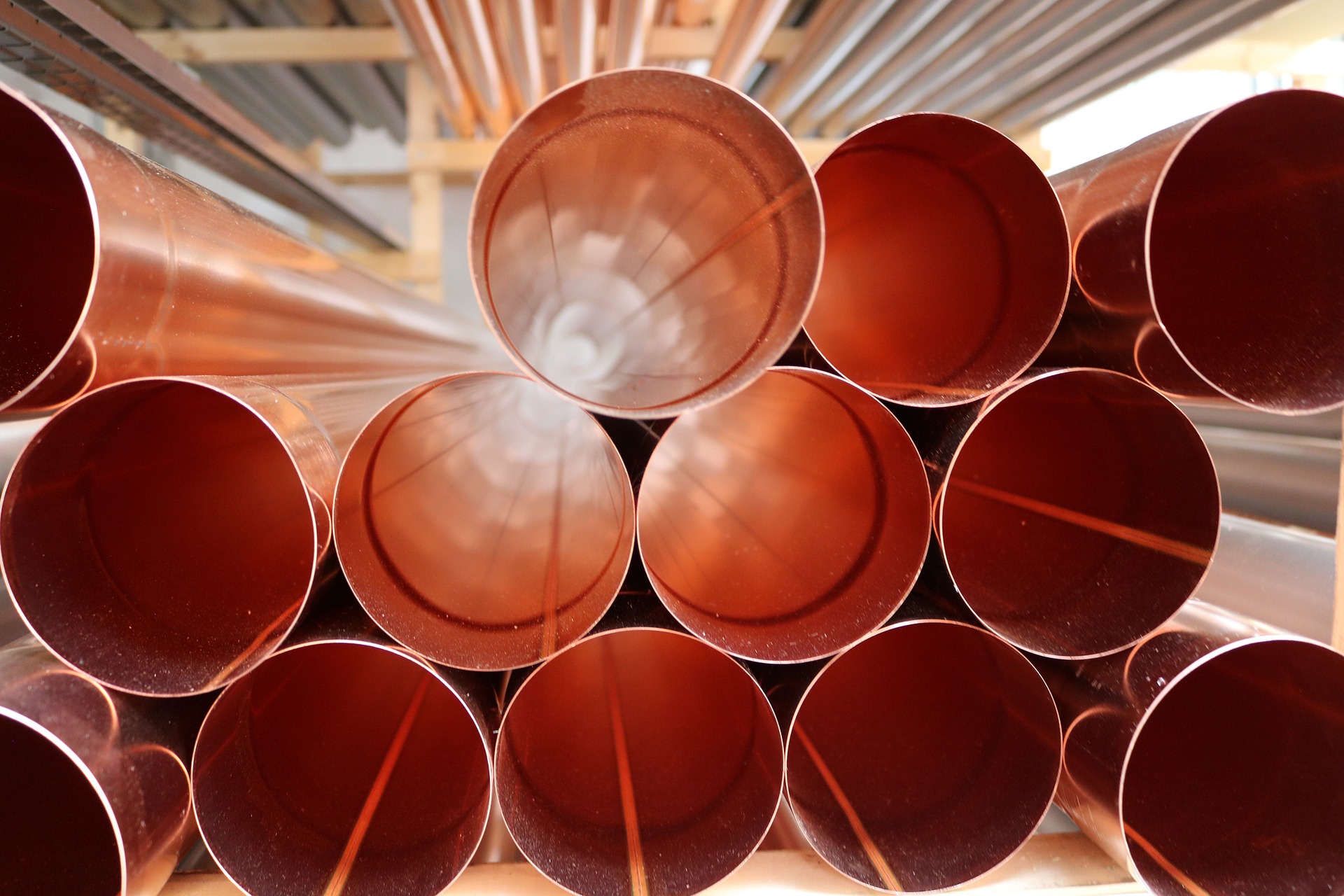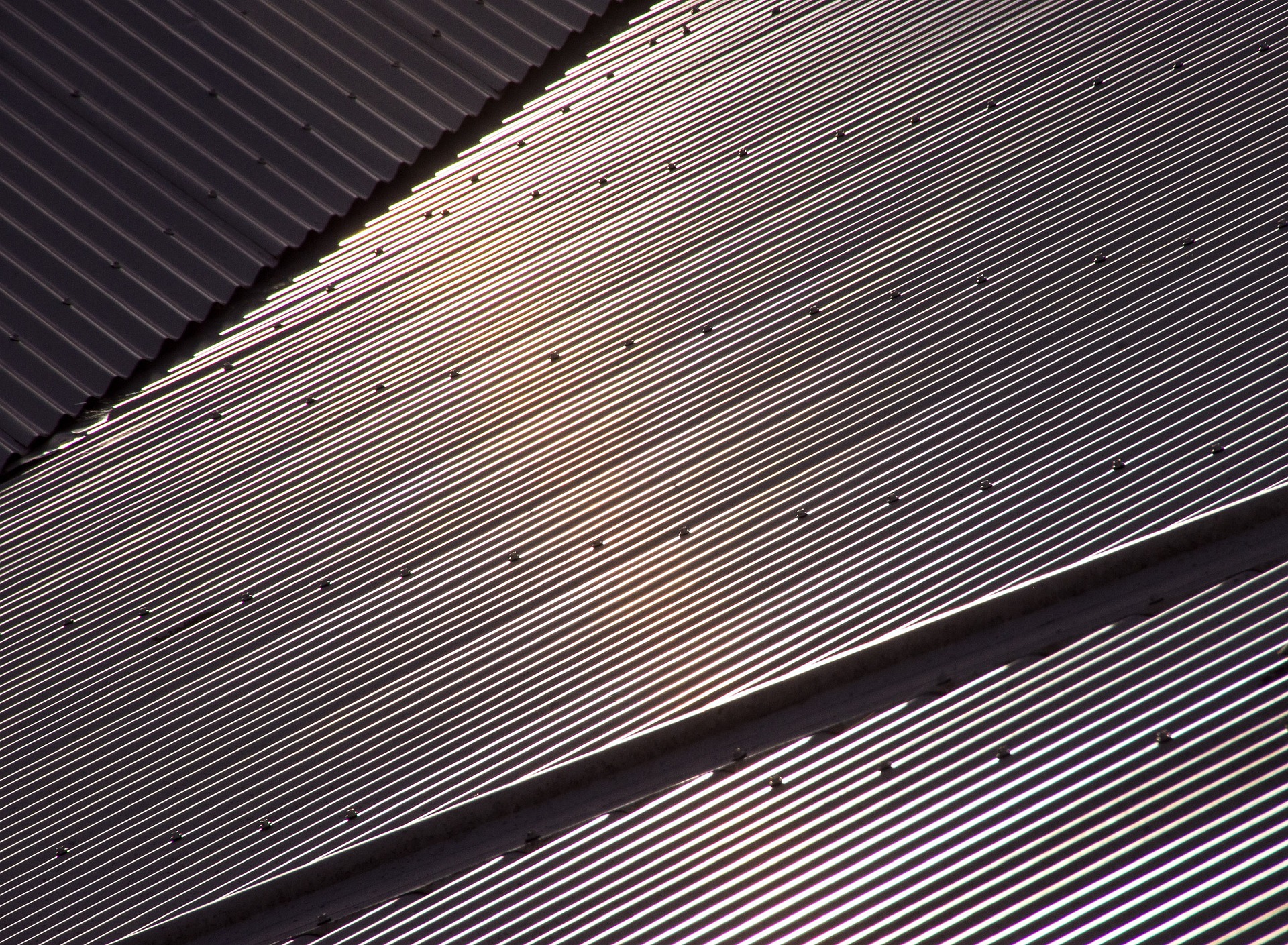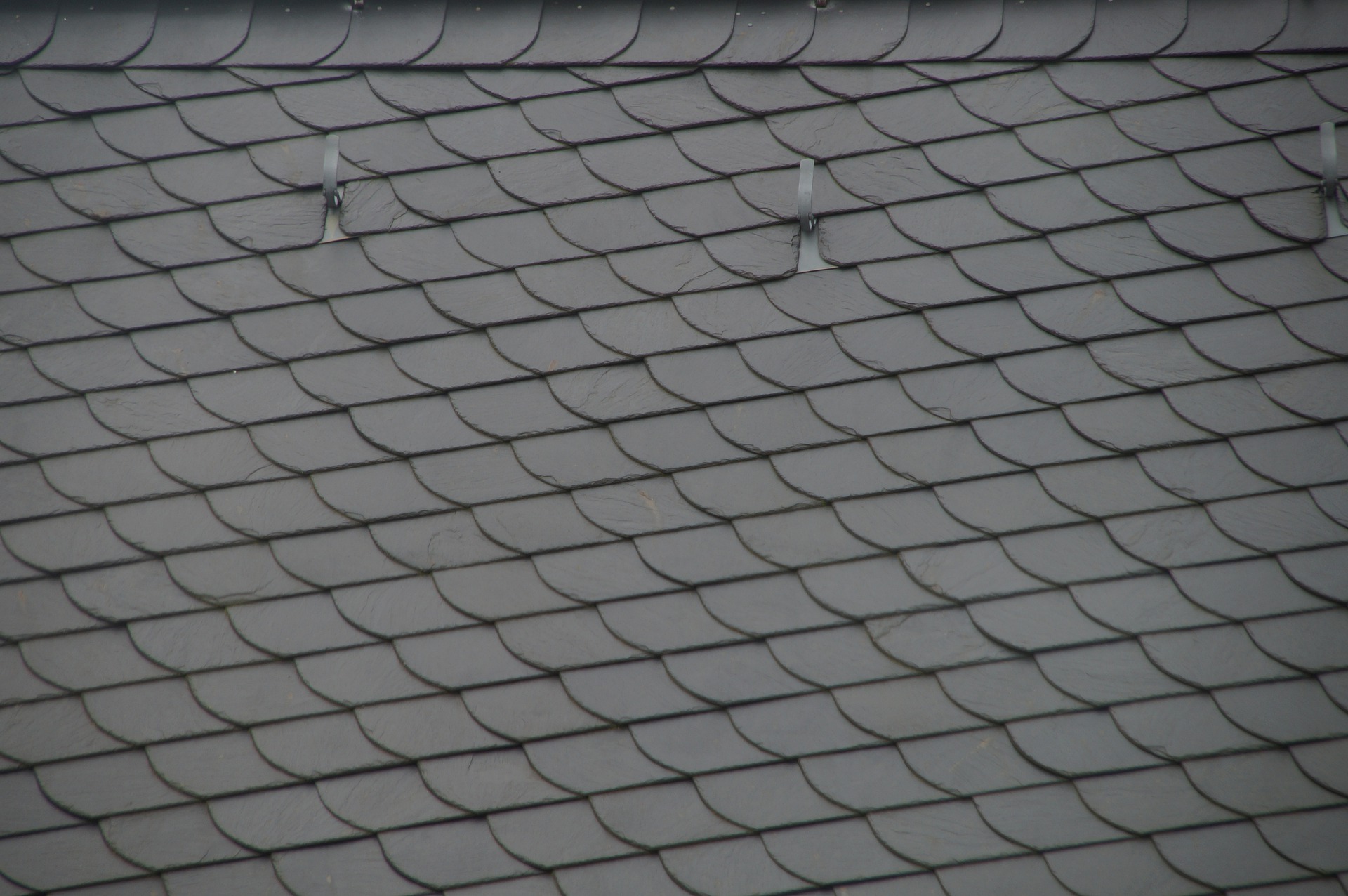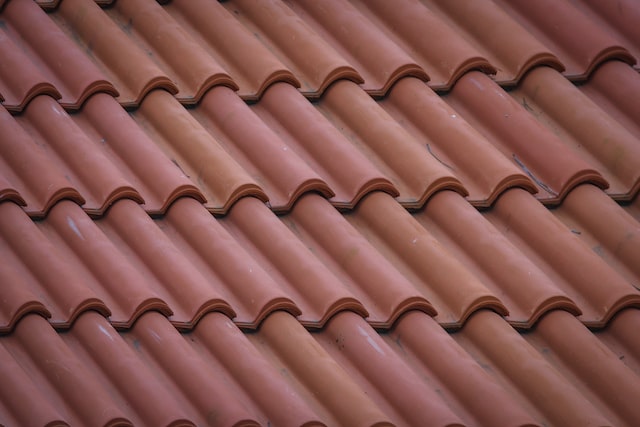Have you been putting off the project because you don’t know which roofing material for flat roof is the best? Do you have a flat roof that needs to be replaced or repaired?
Choosing the right roofing material is important because a flat roof is more susceptible to leaks than a sloped roof. You need a durable material that will seal well to prevent water from seeping in.
Roofing materials for flat roofs have come a long way in recent years, and there are now many different options to choose from.
In this article, we’ll look at some of the most popular roofing materials for flat roofs, so you can decide which one is right for your home or business.
DIFFERENT TYPES OF ROOFING MATERIALS FOR FLAT ROOFS

Flat roofs have only been used for industrial facilities or multi-story residential homes, whereas traditional gable or hip roofs have been used for low-rise structures. However, technological advances and the market for building components have enabled horizontal roofing in individual dwelling development. Property owners can now choose from various materials for their flat roofs.
The most common materials used for flat roofs are:
🏠PVC MEMBRANE
PVC roofing membranes are made of a scrim, which is a continuous filament lattice coated with PVC thermoplastic. The scrim provides dimensional stability and resistance to tears, while the PVC layer gives the roofing membrane flexibility, fire retardancy, and UV resistance.
PVC membranes are available in white or light gray and can be installed in ballasted, mechanically fastened, or adhesive-attached systems.
Pros:
✅Naturally flame-resistant: When the source of the fire is taken away, a flame will not stay on a PVC membrane. It can be simpler for PVC roofing systems with strong flame resistance to obtain Class-A fire ratings than some other roofing systems.
Many environmental poisons are produced by combustion, particularly incomplete combustion. A non-flammable roof membrane is less likely to emit potentially dangerous compounds than a combustible roofing material.
✅Adaptable to different climates: PVC membranes are less temperature sensitive than other roofing materials. They can be installed in hot or cold weather and perform well in both warm and cool climates. PVC membranes also highly resist ultraviolet (UV) radiation, making them ideal for use in sunny locations.
✅Impermeable: PVC membranes are completely impervious to water. They do not absorb water, and they resist wind-driven rain and snow. PVC membranes also have a high resistance to ponding water, making them ideal for use on flat or low-slope roofs.
✅Extremely chemical-resistant. PVC membranes offer enduring service in the challenging conditions found on rooftops. Several PVC roofs have been in use for more than 30 years and are still in good condition.
A roof that lasts longer throughout a building’s lifespan requires fewer replacements. Three to four PVC roofs are likely to outlast eight to ten non-PVC roof systems in a building that lasts 100 years.
✅Recyclable: You can recycle PVC membranes; many manufacturers offer take-back programs for used PVC roofs. Recycling PVC reduces waste in landfills and helps conserve energy and resources required for manufacturing new products.
Cons:
❎Susceptible to punctures: PVC membranes are susceptible to punctures from falling debris, roof traffic, and other sources. You can repair most punctures without affecting the entire membrane. However, if a large section of the membrane is damaged, it may need to be replaced.
❎Potential for plasticizer leaching: PVC membranes contain plasticizers that can migrate out of the material over time. The leaching of plasticizers can affect the adhesion of coatings and other materials applied to the membrane.
❎High initial cost: PVC membranes are one of the most expensive types of roofing materials. However, their long lifespan and low maintenance costs make them a cost-effective choice in the long run.
❎Limited color choices: PVC membranes are available in white or light gray. If you are looking for a flat roof material in a different color, you may want to consider another type of roofing material.
🏠EPDM RUBBER
The EPDM rubber coating is created from recycled rubber resources that are environmentally beneficial. In addition to rubber-based EPDMs, composite replacement materials for flat roofs are also available. Their upper layer is typically rubber, while their lower layer is a flexible bitumen-polymer. Fabric is often used as a reinforcement between the two layers in both types of products.
EPDM roof is a synthetic rubber that has excellent resistance to weathering, ozone, and UV rays. It is also very flexible, making it ideal for flat or low-slope roofs.
Pros:
✅It varies from other membranes because it has greater flexibility (approximately 400%) and is less expensive.
✅The coating is resistant to all types of weather.
✅EPDM roofing is long-lasting, with a life expectancy of 30 to 50 years.
✅It is a very easy material to work with and can be cut with a utility knife. EPDM roofing is available in black or white.
Cons:
❎The main disadvantage of EPDM rubber roofing is that it is not as durable as other roofing materials. It is susceptible to punctures and tears, and UV rays can damage it.
🏠BUILT UP ROOF
Built-up roofing (BUR) systems are composed of alternating bitumen layers, and reinforcing fabrics typically applied over a nailable deck. The bitumen is generally asphalt, coal tar, or cold-applied adhesive. The fabrics used in built-up roofing can be organic or inorganic.
Organic fabrics are made from felts that are impregnated with asphalt. Inorganic fabrics, such as fiberglass or polyester, are less commonly used in built-up roofing because they are more expensive than organic fabrics.
Built-up roofs have been used for over 100 years and are still one of the most popular types of commercial roofing system. They are durable, long-lasting, and low maintenance.
Pros:
✅Built-up roofs are very durable and can last up to 40 years with proper maintenance.
✅They are resistant to UV rays, fire, wind, and hail.
✅BUR systems can be applied over many different types of substrates.
✅They are low-maintenance and easy to repair.
Cons:
❎Built-up roofs are susceptible to leaks if they are not installed properly.
❎They are also one of the heaviest types of roofing, which can stress the supporting structure.
❎BUR systems can be expensive to install.
🏠SPRAY-ON ROOFING
Spray-on roofing systems are composed of a liquid polymer spraying onto the roof surface. The spray forms a continuous membrane that seals the roof and protects it from the elements. Spray-on roofing systems are also known as fluid-applied roofs or single-ply membranes.
Spray-on roofing systems are a relatively new type of roofing material. They have only been available for about 20 years. However, they have quickly become one of the most popular types of commercial roofing.
Pros:
✅Spray-on roofing systems are very durable and can last up to 30 years with proper maintenance.
✅They are seamless, so they are resistant to leaks.
✅They are also flexible, expanding and contracting with temperature changes without cracking or breaking.
Cons:
❎The main disadvantage of spray-on roofing systems is that they are more expensive than other types of roofing.
🏠MODIFIED BITUMEN ROOF
Modified bitumen roofs require only one layer of adhesive roofing material, making them suitable for do-it-yourself installations. Previously, modified bitumen was put with a torch; however, self-adhering solutions are now available.
Additionally, modified bitumen roofs are lighter in color, which aids in reflecting some of the sun’s infrared rays and reduces HVAC costs in buildings.
Modified bitumen roofs are a kind of asphalt roofing. They are created by combining normal asphalt with modifiers such as rubber or plastic. This increases the asphalt’s flexibility and durability.
Pros:
✅Modified bitumen roofs are durable and can last up to 20 years with proper maintenance.
✅They are easy to install and repair.
✅Modified bitumen roofs are available in a variety of colors.
Cons:
❎The main disadvantage of modified bitumen roofs is that they are not as fire-resistant as other types of roofing.
🏠METAL ROOFING

The durability of metal is one of its main selling advantages. A correctly built metal roof can outlast the building on which it is installed. Most metal roofs are lightweight and simple to install over existing materials.
They are great to heat conductors, making them appropriate for places where winter can persist for up to 4-5 months. They are particularly suitable for places with a lot of snow and rain since the roof panels lock together and keep any water or snow out of the building.
On the other hand, metal roofs are normally only practical for sloped or low-sloped roofs and cannot be used for completely flat roofs. A metal roof’s high cost and loudness might also be an issue, although the positives usually exceed the negatives.
TIPS FOR CHOOSING THE BEST ROOFING MATERIAL FOR FLAT ROOF

Every roofing material has its own set of pros and cons. When it comes to flat roofs, there are a few things you should keep in mind. Here are some tips on how to choose the best roofing material for a flat roof:
📍Climate
The climate is one of the most important factors when choosing a roofing material. If you live in an area with extreme weather conditions, you must choose a material that can withstand the elements.
For example, if you live in an area with high winds, you will want to avoid materials susceptible to wind damage. However, if you live in an area with milder weather conditions, you will have more flexibility when choosing a roofing material.
📍Consult With A Roofing Expert
The best approach to selecting the best flat roofing material is to consult a roofing specialist and listen to their recommendations for what is best for your home. It is also critical that you obtain a roofing quote to comprehend the project’s complete cost. Before making a recommendation, the roofing specialist will analyze various factors.
It is recommended that you investigate your choices. Examine many roofers in your region and request an initial examination or consultation. Compare and contrast each flat roofing installer’s service packages, experience, and other factors to determine whether the company is a good fit for you.
📍Weight
Weight is another crucial factor to consider when selecting your ideal roofing material. It is no surprise that not all roofing materials are made equal. Some are more durable or more adapted to a specific environment, while others are simply more appealing to some homeowners. However, before you commit to a material, examine whether your home can support its weight. If not, you may need to consider a lighter-weight material.
📍Maintenance
Maintenance frequency varies depending on the material being used, but you should plan on frequent inspections, repairs, and replacements. All roofs require maintenance, but some materials require more than others. Make sure you select a material that you are comfortable with maintaining regularly.
📍Cost
Cost is always an important consideration when choosing any building material. You will want to compare the cost of different roofing materials before making a final decision. In addition, you should factor in the installation cost when considering the roofing material’s overall cost.
📍Durability
Who wouldn’t mind a roof that lasts longer? While all roofing materials have a lifespan, some materials are more durable than others. If you want a roof that will last for many years, you should choose a material known for its durability.
📍Aesthetics
The aesthetic value of a home can be affected by the type of roofing material used. Before deciding on a new roof, it could be helpful to see what other houses in the area have done.
Your roof’s functionality is vital, but so is its visual influence on your home. That’s why it’s important to think about how various roofing materials will go with your home’s design and color scheme.
If you’re more concerned with saving money and economizing on maintenance, you can give more thought to color schemes than architectural details. The end result will still be aesthetically nice.
📍Local Regulations
Some areas have building codes and regulations that must be followed when installing a new roof. These regulations are usually in place to ensure the safety of the community. Before choosing a roofing material, make sure you are familiar with the local regulations.
Frequently Asked Questions
Q: What is the best roofing material for a flat roof?
A: There is no definitive answer to this question since there are many factors to consider when choosing a roofing material. You will need to consult with a roofing specialist and get a quote to understand the project’s cost fully. Other important factors include weight, maintenance, durability, and aesthetics.
Q: How much does it cost to install a flat roof?
A: The installation cost will vary depending on your chosen roofing material. You should also factor in the cost of inspection, repair, and replacement when considering the project’s overall cost.
Q: How often do I need to maintain my flat roof?
A: Maintenance frequency varies depending on the roofing material, but you should plan on frequent inspections, repairs, and replacements. All roofs require maintenance, but some materials require more than others. Make sure you select a material that you are comfortable with maintaining regularly.
Q: What are the local regulations for installing a flat roof?
A: Some areas have building codes and regulations to be followed when installing a new roof. These regulations are usually in place to ensure the safety of the community. Make sure you are familiar with the local regulations before choosing a roofing material.
FINAL WORDS
There is no such thing as the “best flat roof repair material” because each has its own set of characteristics, strengths, weaknesses, and installation methods. Because of this, it’s important to think about your requirements, budget, and aesthetic preferences before deciding on a roofing material. That way, you can be sure to choose the best roofing material for your needs.

